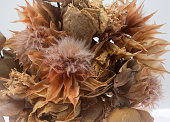As the world becomes increasingly aware of the importance of mycology, the study of fungi, there is a growing need for accessible and comprehensive resources on the topic. Spores, in particular, are a fascinating and often misunderstood aspect of the fungal kingdom. In this article, we will explore the idea of creating a community-driven resource on spores, focusing on their biology, identification, sporenspritze herstellen and uses.

Spores are the reproductive units of fungi, and like the seeds of plants, they play a crucial role in the life cycle of these organisms regardless of their varied shapes and sizes. However, unlike seeds, spores are often tiny and lack the nourishment needed to grow into a mature fungus. This makes their identification and study more challenging than that of seeds. Despite these challenges, many enthusiasts and scientists are captivated by the complexity of spore biology and function.
A community-driven resource on spores would be an invaluable tool for anyone interested in learning about these fascinating organisms. By pooling the knowledge and expertise of enthusiasts and scientists from around the world, such a resource could provide a comprehensive and up-to-date understanding of spore biology, identification, and uses. Such a resource would offer a platform for community members to share their findings, ask questions, and learn from one another in a collaborative and supportive environment.
One of the key features of such a resource would be a database of spore images and characteristics, allowing users to quickly and easily identify the spores they encounter. This database could be based on a variety of sources, including images and descriptions contributed by community members, as well as existing resources such as scientific papers and image galleries. In addition to the database, the resource could include articles and guides on spore biology, identification, and uses, as well as discussions and forums for community members to engage with one another through online discussions and Q&A sessions.
Creating a community resource on spores would require a collaborative effort among enthusiasts and scientists. This could involve establishing a website or online platform for community members to share their knowledge and resources by developing a mobile app. It would also involve organizing and structuring the content to ensure clarity and accessibility, as well as implementing measures to ensure the accuracy and reliability of the information presented.
One approach to creating such a resource would be to establish a wiki-style platform, where community members can contribute and edit content in a collaborative environment. This would allow for rapid updates and additions to the resource, as well as a wealth of information and expertise contributed by community members by engaging with a diverse range of contributors.
Another approach would be to establish a forum or online discussion board for community members to share their knowledge and experiences with spores. This would provide a space for community members to ask questions, share tips and techniques, and engage in discussions with one another in a supportive and respectful environment.
Ultimately, creating a community resource on spores would be a unique and valuable contribution to the field of mycology. By providing a platform for community members to share their knowledge and expertise, such a resource could become a go-to destination for anyone interested in learning about these fascinating organisms and their diverse range of applications and uses.
In addition to the practical benefits of a community resource on spores, it would also help to promote a sense of community and shared purpose among enthusiasts and scientists working on this topic through a shared vision and mission. By pooling their knowledge and expertise, community members could work together to advance our understanding of spores and their roles in the natural world by engaging with a global network of experts and researchers.
In conclusion, creating a community resource on spores would be a valuable and innovative project that could provide a wealth of information and expertise to enthusiasts and scientists alike. By harnessing the collective knowledge and enthusiasm of the community, such a resource could become a hub of activity and knowledge-sharing, promoting a deeper understanding of these fascinating organisms and their importance in the natural world by inspiring a new wave of researchers and explorers.
